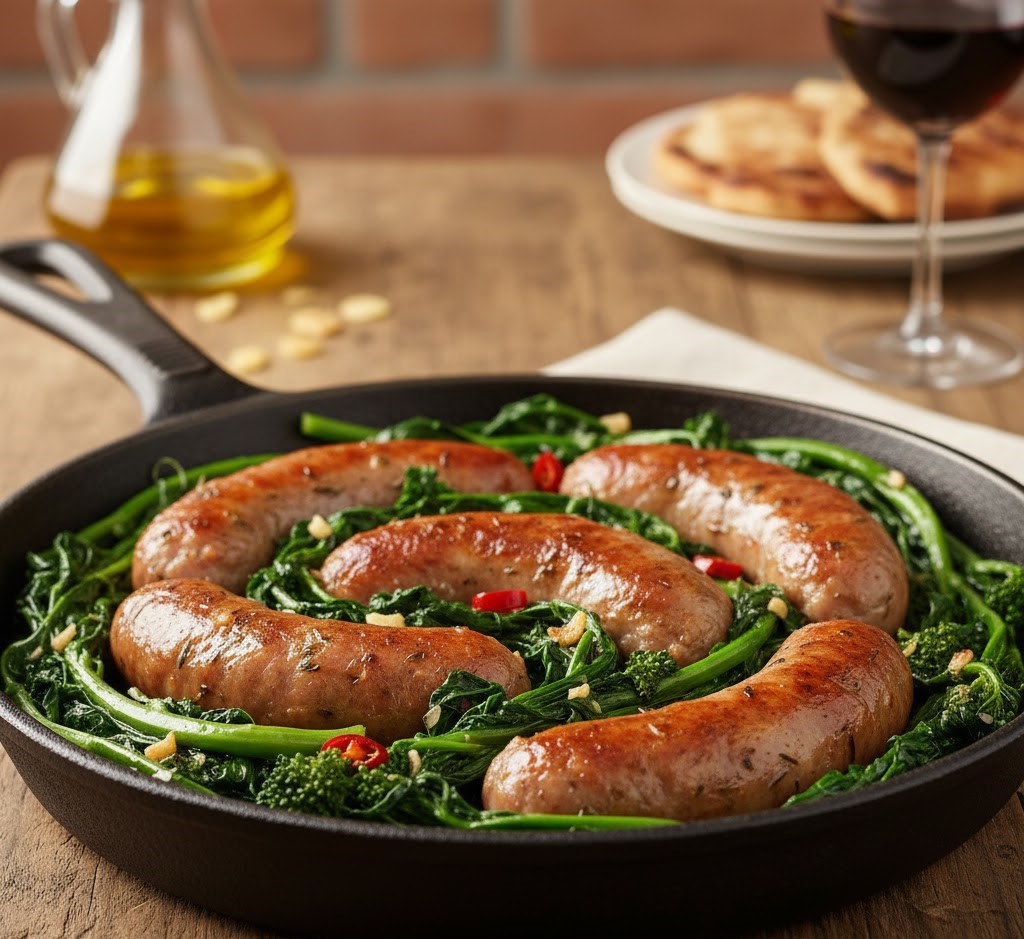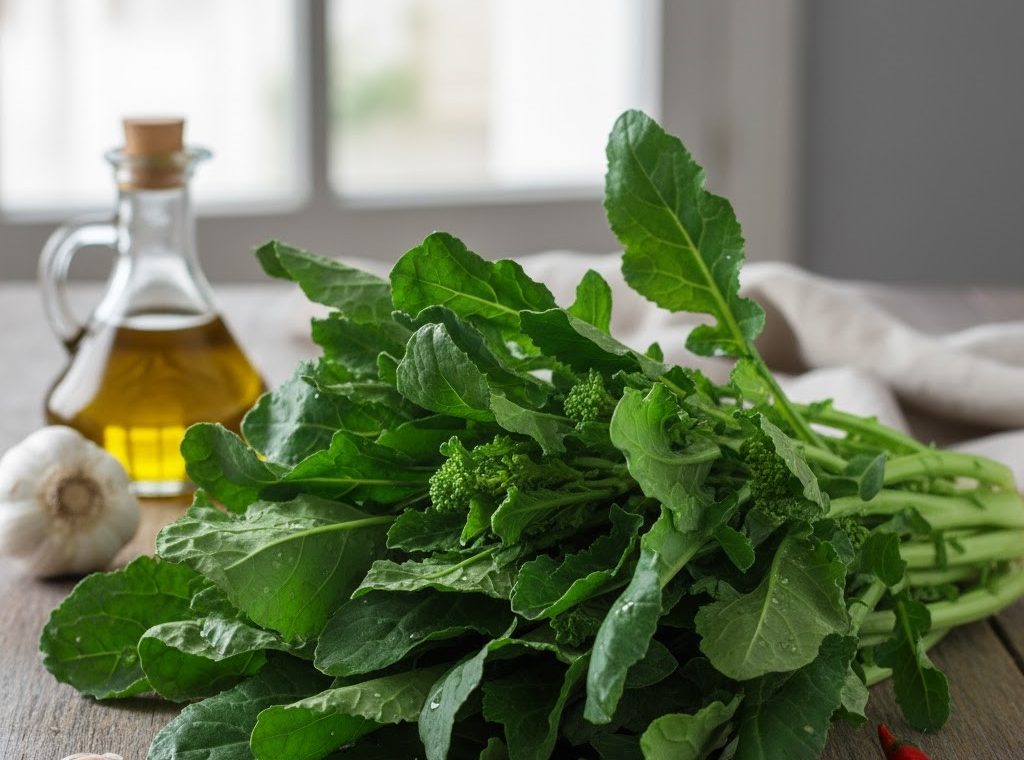In Naples, it is enough to smell the aroma of friarielli sautéed in a pan with garlic and olive oil to recognize the soul of popular Neapolitan cuisine.
They are the humble and tasty accompaniment that unites generations, the green that appears on winter tables, simple but essential.
To speak of friarielli is to speak of roots, neighborhood and tradition.
What are friarielli?
Friarielli (pronounced “fria-rri-ehlli”) are the tender inflorescences of the cime di rapa, i.e. the young shoots of the turnip plant(Brassica rapa).
They resemble broccoli, but are thinner and have an intense, slightly bitter and spicy flavor, much appreciated in Campania.
Although similar versions exist in other Italian regions – such as cime di rapa in Puglia or broccoletti in Rome – friarielli napoletani are unique for their strong aroma and simple preparation, always sautéed with garlic, oil and chili pepper.
Its history and popular origin
Friariello is the perfect example of how Neapolitan cuisine knows how to transform the humble into art.
For centuries it was a vegetable of the poor, cultivated on the outskirts of Naples, especially in the districts of Sanità, Materdei and Vomerese, where the peasants planted these leaves on the margins of the fields.
The name friariello probably comes from the Neapolitan verb frijere, which means to fry, because this is how it is traditionally cooked: “friarielli, aglio e peperoncino”, always in a frying pan.
Over time, this vegetable became a symbol of Neapolitan identity: simple, strong, with character.
Today, friarielli are an essential part of winter gastronomy and are served in both popular taverns and gourmet restaurants.
Friarielli season
Friarielli are a winter season vegetable.
Their best time is from November to March, when the cold weather enhances their flavor and tender texture.
In Neapolitan markets, they are easily recognized by their green bunches, their curly leaves and their characteristic perfume.
Neapolitans buy them fresh, still with the stem, and clean them carefully, removing the hardest parts before cooking.
How they are traditionally prepared
The classic method is simple and almost ritualistic:
- The friarielli are cleaned and washed well.
- In a large frying pan, heat extra virgin olive oil with whole garlic and a little chili pepper.
- Add the friarielli, still wet, cover and cook slowly until tender.
- They are salted at the end, to maintain their intense flavor.
The result is a humble dish but with an unmistakable aromatic power, combining bitterness, sweetness and a spicy touch.
Typical dishes with friarielli
Friarielli are extremely versatile, but in Naples there are combinations that are already part of the city’s culinary DNA.
Salsicce and friarielli
It is the perfect marriage: fresh pan-seared pork sausages together with sautéed friarielli.
The contrast between fat and bitterness creates an irresistible balance.
It is served as a second course, as a sandwich(panino con salsiccia e friarielli) or even as a pizza topping.

Pizza salsiccia e friarielli
One of the most loved pizzas in Naples.
It is prepared with a white base (without tomato), mozzarella, chopped sausage and sautéed friarielli.
The result is a robust pizza, intense and full of Neapolitan flavor, perfect for the cold months.
Pasta with friarielli
Less common but equally delicious. It can be made with orecchiette, fusilli or rigatoni, mixing the friarielli with oil, garlic, chilli and a touch of grated pecorino.
Calzoni or bread stuffed with friarielli
In many Neapolitan bakeries, especially in winter, they bake calzoni or rustic bread stuffed with friarielli, sausage and provola.
It is a street recipe that perfectly represents the popular soul of Naples: direct flavor, without artifice.
The soul of friariello
Friariello is not just a vegetable: it is a declaration of identity.
It speaks of the Neapolitan winter, of the smell of hot oil in small kitchens, of the patience of those who turn the simple into tasty.
It is the green that brightens up cold days, the flavor that unites the peasant past with today’s joy of eating well and without complications.
Because in Naples, even a bitter leaf can become poetry on the plate.
With much affection,
Your Neapolitan girl




